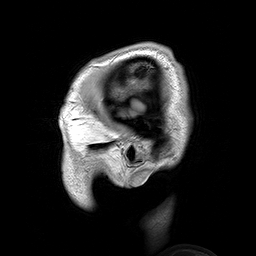Cognitive science explains mind and brain in terms of computation, information-processing, and representationalism: the ability of a cognitive system to change internal microstructure so as to correspond with important features of the internal or external world. One could do worse than to sum up the cognitivist model of the mind as “computations over representations”, in which features of the world or body are coded by the brain as symbols.
Whatever merits this “cognitivist” research program may have for models of syntactical production, the consolidation of short-term memories into long-term, the recognition of familiar faces, logical problem-solving, and other phenomena, I suspect that critical aspects of how people have knowledge of their bodies are not adequately accounted for by cognitivist approaches. I maintain that a careful analysis of the evidence reveals cognitive science has a flawed approach to modeling how well people know what is happening inside their bodies, and what mental and biological processes underlay this knowledge.
There are many aspects of psychological life that have never been the focus of cognitive science, and this absence is at it’s foundation the Cartesian rift at the heart of objective models that depict mind as machine. People experience a world of meaning framed by temporality and grounded in the lived body, but cognitive science focuses on a subpersonal realm of symbols, algorithms, information processing, representation, where mind is reduced to computation. To the extent that this approach yields results, it should be pursued, but cognition outstrips what cognitivism can model. There are aspects of cognition that are characterized by the existential questions, embodied experience, consciousness, meaning, and other phenomena, but it is precisely these that objectivistic, Cartesian cognitive science has not, for the most part, tried to explain. The difference is that of between worlds, like the gap between music grasped as experienced and meaningful, compared to music understood as a system that can be analyzed through abstract system-centered objectivistic modeling. It is true that science is typically understood in the latter terms, but neurophenomenology aims at a dialog between psychological life as experienced and cognition understood as a mechanism produced by te brain. There is not an immediate move toward reduction nor a premature assumption that embodied experience can be automatically modeled as a byproduct of systems.
In everyday life, and especially in conditions of sickness or disease, people notice aspects, qualities, and states of their bodies, and seek to get information about and from their bodies. Getting information about body-state can involve perception of a symptom, focused attention or introspection toward specific body regions or parts, remembering the way one’s body felt previously and comparing this to a current assessment, attempting to verbally express feelings about the way one’s body seems, paying close attention to a body part that is usually indistinct or in the background but suddenly is painful, and many other similar activities. Consider the following examples:
• a subject in a clinical trial of a medical device is asked whether or not they notice anything unusual or different about the way their body feels, and if so, to rate how much on a numeric scale;
• a person taking psychiatric medication for depression tells their psychiatrist about adverse side effects, such as a decline in libido, and an inability to grieve the loss of a loved one while at a funeral;
• someone who is drinking alcohol may calibrate their intake based on the memory of nausea from previous episodes of over-consumption;
• an obese woman is reported by American media to have been shocked upon finding she was in labor and on the verge of giving birth, having no previous knowledge of her pregnancy.
• a person who is being massaged, when asked to describe the sensation, reports a mixture of significant pleasure and mild pain when pressure is applied to very specific regions of their upper-back
In these and in similar cases, individuals involved are sensing, perceiving, remembering, and judging about their symptoms, body states, feelings, and sensations, and in some examples, reporting their experience to others. These are cognitive phenomena, but can ideas derived from symbolic logic and representationalist epistemology suffice to explain them? I would argue that there are a number of open questions about the utility of information-processing theories of body-knowledge.
Are the introspective reports, assessments, and statements generated by people about their body-state generally accurate, or not? What mechanisms account for the accuracy, or lack thereof?
To what extent do legacy concepts from cognitive science or information-processing models help or hinder the development of an understanding of how people access information and gain knowledge about their bodies?
How are we to understand the meaning(s) of the term “information” used to explain how and how well people know their own mental and physiological states? What is the relationship of “information” in the sense of physiological or biological systems to consciously reportable sensation, such that a person is getting information about their body state?
Are there many kinds of “information” involved in these models of internal state perception or “body cognition” found in clinical neurology, medicine, experimental psychology, and theoretical cognitive neuroscience? Or is there but one type of “information”, with different qualities or aspects that are described or measured in different ways?
